All about the community of model railroading and rail enthusiasm
Creating a continuous scene
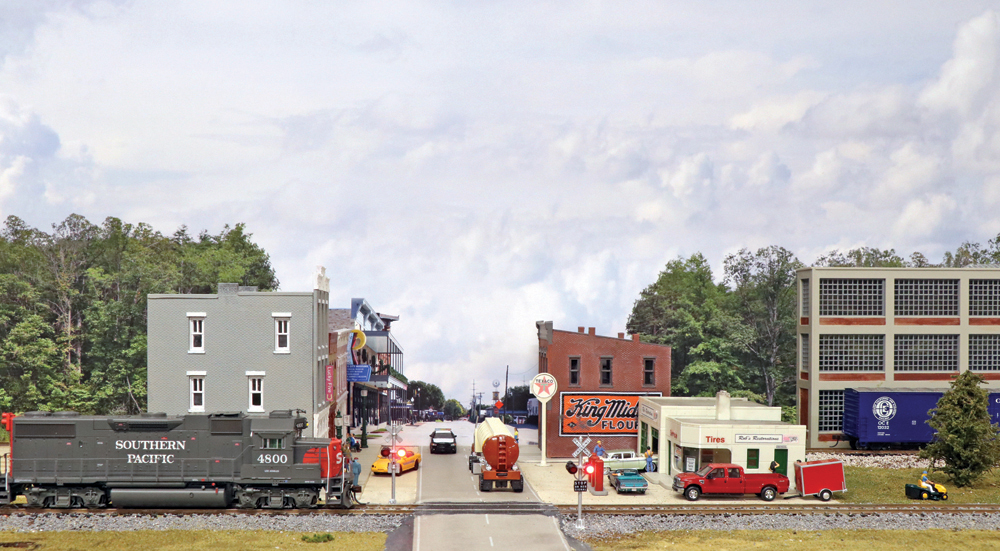
By TIM BLACKWELL/Cowcatcher Magazine
One of the most difficult tasks in blending a three-dimensional model railroad with a backdrop is where the foreground meets the background.
Transitioning roads, streams, rivers and track so they realistically flow in or out of the background and onto the layout requires planning, some artistic skill and patience. It doesn’t happen overnight.
On the Northwest Tarrant & Pacific, the main line passes through Norwood, which has a main street in downtown. The plan called for blending a short foreground of HO-scale kits into a backdrop of a real NorthTexas downtown. Photos were taken of the city centers of Grapevine and Roanoke,TX, two contrasting downtowns but both with an all-American flare.
Grapevine, founded in 1907 but with earlier history, has a classic American downtown anchored by Main Street. Roanoke, while slightly younger, has retro-classic downtown buildings constructed in recent years. The only comparison between the cities is that Bonnie Parker and Clyde Barrow had a presence in both in the 1930s; they were connected to the murders of two police officers near Grapevine and lived at a Roanoke hotel.
Grapevine, with its old-town charm yet a current economic driver on the fringe of DFW International Airport, was chosen – the perfect backdrop for modern-day railroading set in a region with deep history.
Main Street in downtown Norwood on the Northwest Tarrant & Pacific is all of 18 inches long on the layout but runs farther into the backdrop.The illusion of depth was created by blending HO-scale kits and roadway into a photo of West Hudgins Street just off the main drag of Main Street in Grapevine.
The foreground was crafted from Design Preservation and Walthers building kits and Woodland Scenics pavement system. The scene was rounded out with people and automobiles from Walthers’ SceneMaster series, Preiser, Atlas, Mini Metals, Oxford Automobile Co., River Point Minis and Woodland Scenics’ Scenic Accents. A near-scale die-cast replica of a Pilot Flying J gasoline tanker by Road Champs, picked up on consignment from Discount Model Trains in Addison, TX, adds to the bustle.
The background was produced commercially by Trackside Scenery, which merged the photo of West Hudgins Street into the company’s 18-inch-high Valley Flat Series backdrop. While it mostly sells preprinted backdrops,the company does custom work for a price.
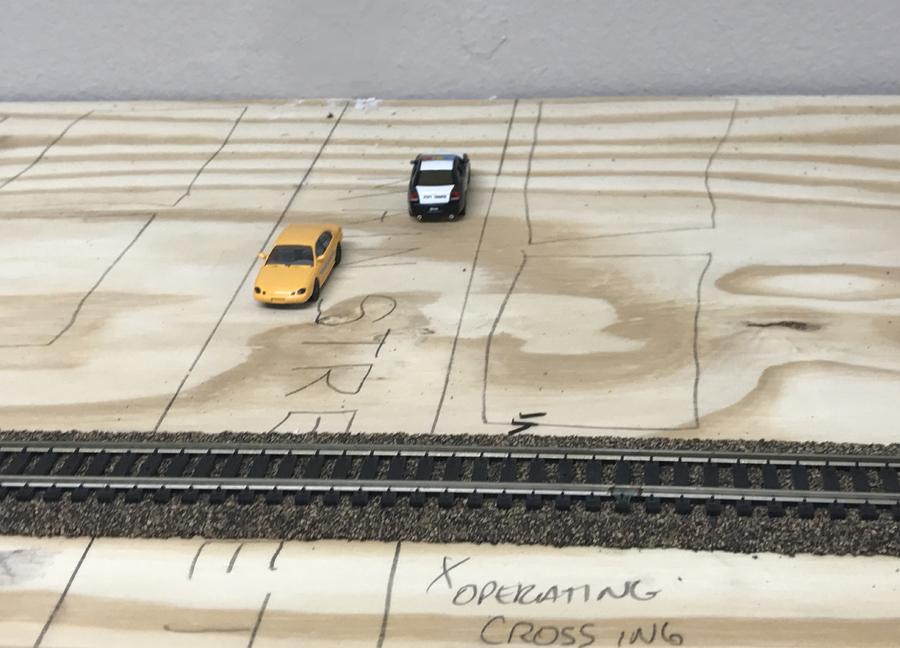
Like any other model railroad town, Main Street started on bare plywood with an outline of the road and structure plots. The road base was created from a combination of Woodland Scenics’ Smooth-It Road System, a plaster material that is similar to Hydrocal, and the plywood base.
Design Preservation Models’ Kelly’s Saloon, Walker Building,Pam’s Pet Shop and Robert’s Dry Goods – good examples of Victorian-era architecture – command Main Street, and the 1950s-esque Rob’s Restorations, a Walthers Winner’s Circle Petro kit, is a gathering spot for vintage car guys near the tracks.
The base for the buildings and sidewalks is made from plastic file cabinet dividers found at Angelo Hobbies in North Richland Hills,TX. The dividers, molded in an aged concrete color, are a realistic alternative to commercial sidewalks at an affordable price. Concrete cut joints were scribed using a dental pick.
Once painted and detailed, the buildings were planted on either side of Main Street. Building signs for Lucky Five − a bar named after a former Mexican restaurant in Topeka, KS − Joe’s Coffee Shop, Jose’s Mexican Restaurant and Rob’s Restorations were custom made on a computer and laser-printed on plain paper.
The large “King Midas” sign on Jose’s Mexican Restaurant is a decal from Walthers’ Centennial Mills background building. The decal was wet in water and positioned onto the side of the building after painting. Solvaset decal setting solution was repeatedly added to “melt” the decal into the bricks for a realistic finish.
As with using any solvent, caution is necessary. Our decal cracked in a few places, so we concealed flaws with some grimy gray paint.
The west side of Main Street is lit by Walthers’ Scene Masterstreet lights, and people were added to bring life to the scene. At Rob’s Restorations, retrofitted with vintage Texaco gas pumps, mechanics are busy working on an old Ford.
NJ International crossing signals and Azatrax’s signal detection system were installed on the main line to warn residents and drivers in Norwood when trains approach.
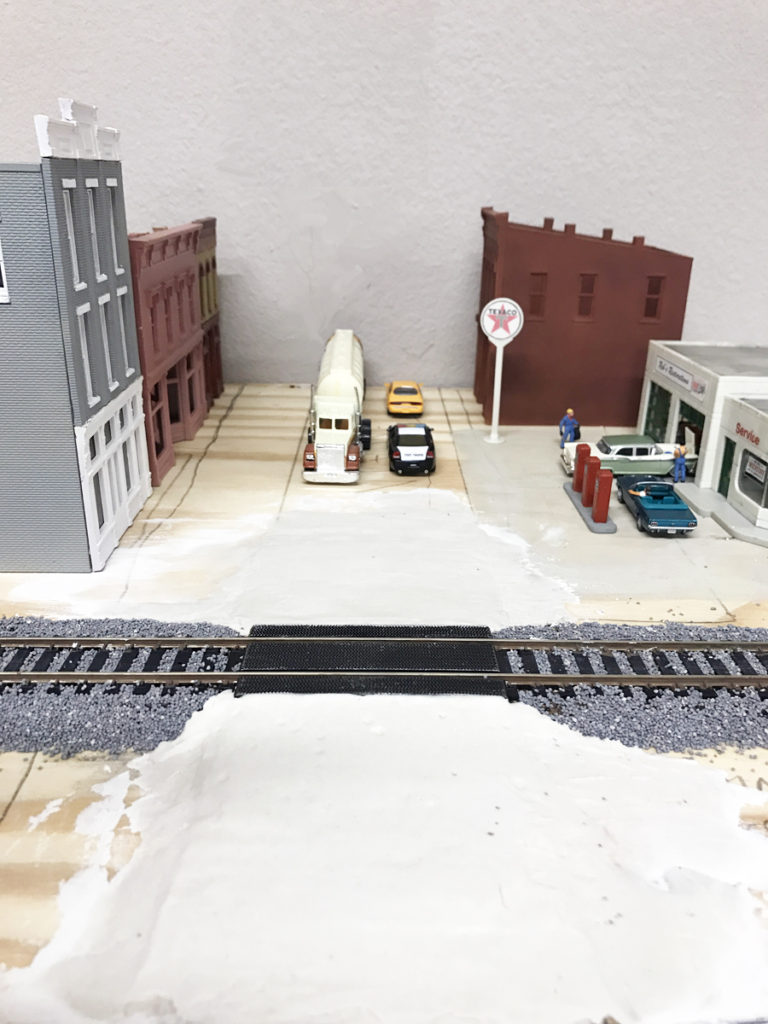
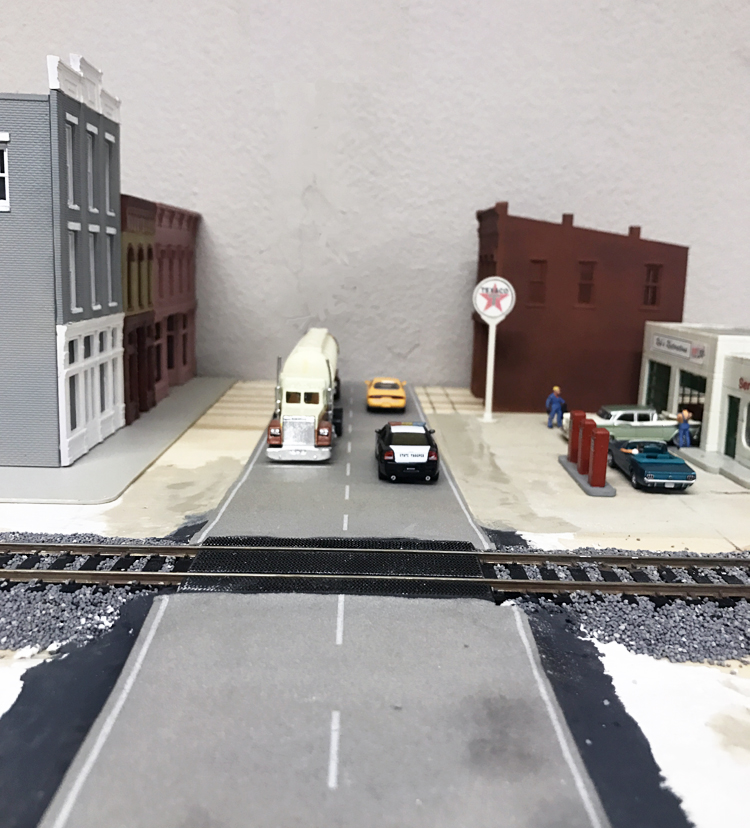
The crowning touch is the backdrop with a photo of West Hudgins Street looking east nestled into the Valley Flats Series VF-01 Level Woodland HO-scale image. The photo was taken from a median on West Hudgins Street (use extreme caution when taking photos near streets) on a Sunday morning when traffic was minimal, using a telephoto lens on a Canon 80D SLR camera.
The building facades on the left just beyond the Grapevine Historical Museum are the Grapevine Visitor Information Center, which occupies the northwest corner of Hudgins and Main. The building has a turn-of-the-century clock tower that was hastily removed in the photograph. Given the tallness of the backdrop, it would have blended in nicely and added dimension − hindsight is 20/20.
Before sending to Trackside Scenery, the photo was enhanced in Photoshop so it would blend in with the foreground buildings. The depth of the visitor center was extended and Bluebonnet Feeds on the right was doubled. The Photoshop work is ultimately covered by the foreground buildings but provides better transition into Trackside Scenery’s backdrop.
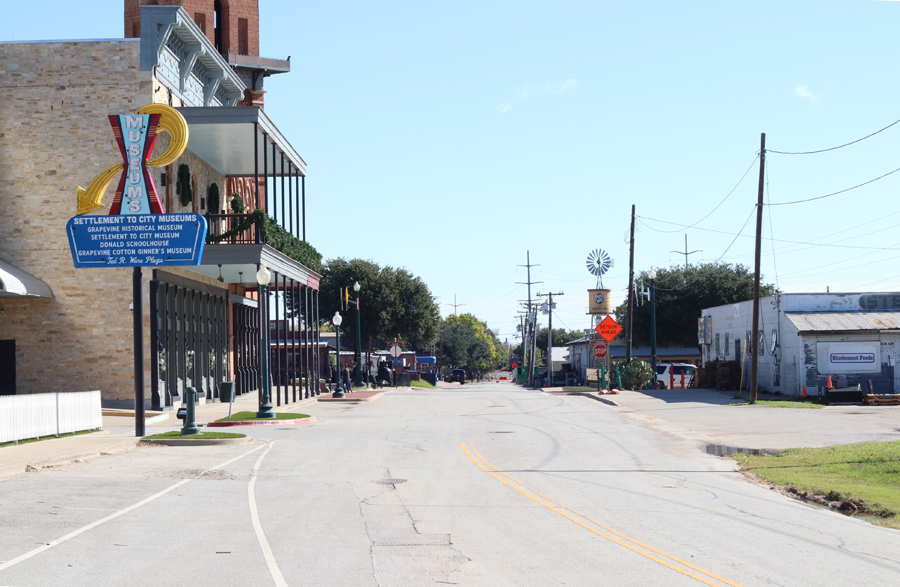
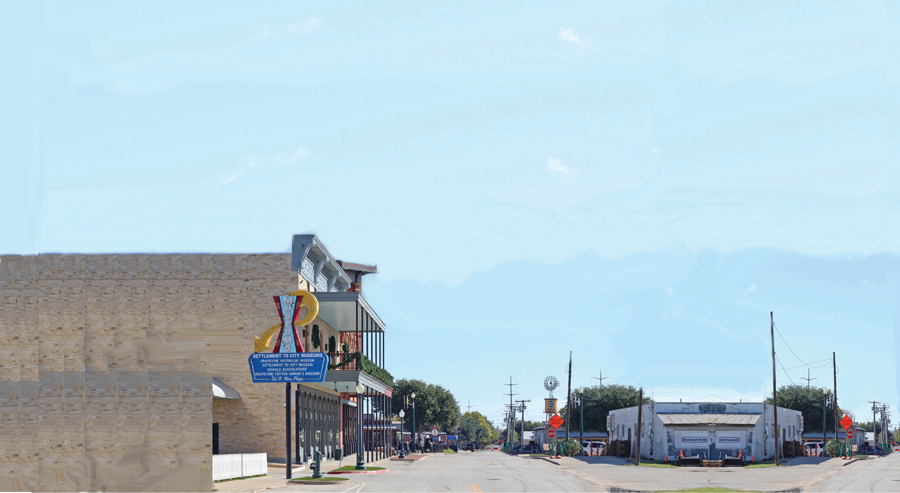
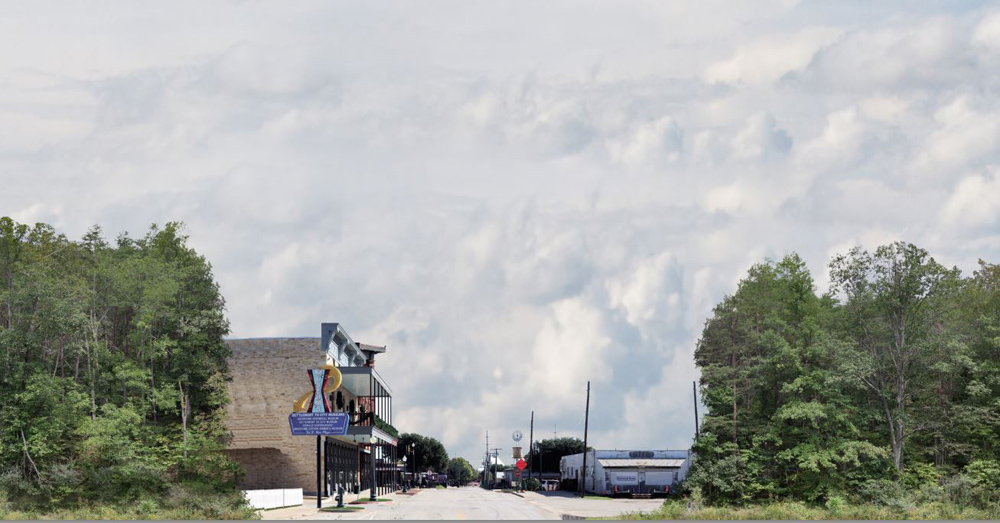
Smooth-It, which once mixed with water pours easy and finishes smooth (some handwork is necessary), was applied on either side of the Main Street grade crossing. The base was poured just slightly below the Woodland Scenics Steel Plate Grade Crossing to allow room for the roadway. Once smooth and dry, Walthers’ SceneMaster self-adhesive paved roadway was affixed to the base, extending off the layout in both directions.
At Trackside Scenery, the sky in the photo was masked out and the image proportionally fitted, based on our measurements. With the original sky masked, the clouds in the backdrop blended behind the photo of West Hudgins Street.
Construction on downtown Norwood began in July and took about five months to fully complete. From bare plywood, it has become the focal point on the Northwest Tarrant & Pacific and a hint of the railroad’s roots.
Read more about the construction of Norwood and the Northwest Tarrant & Pacific in the January/February 2019 Cowcatcher. Additional coverage in the four-part series can be found in the September/October and November/December 2018 issues.